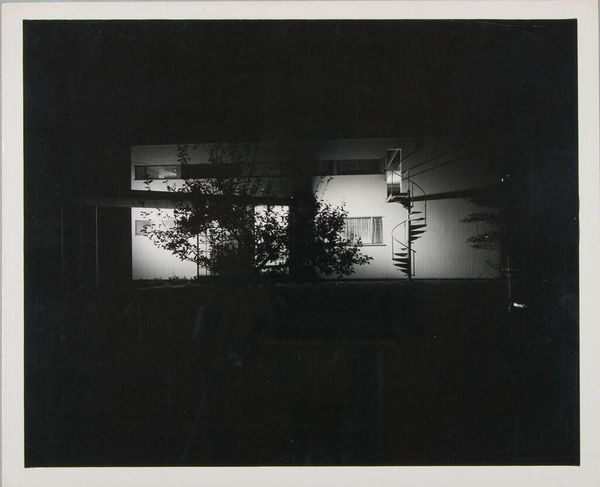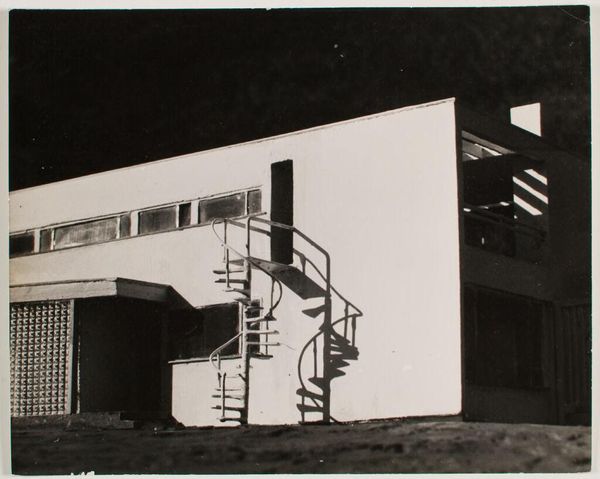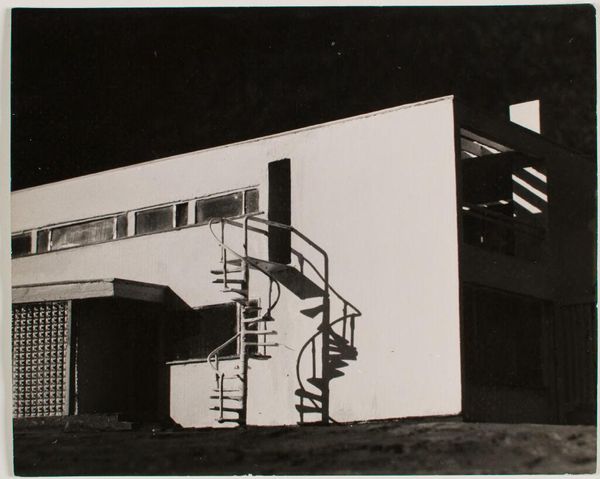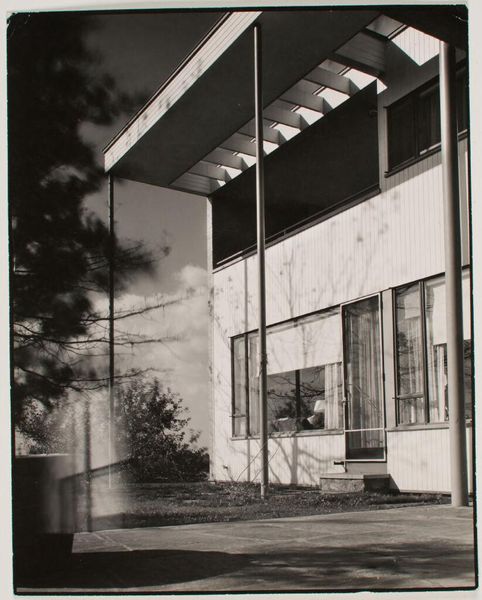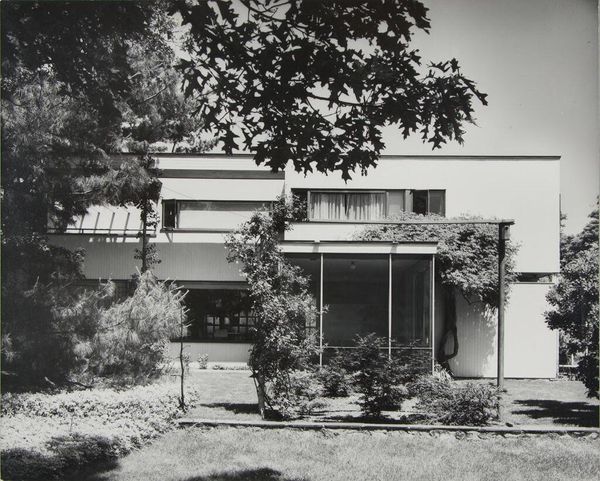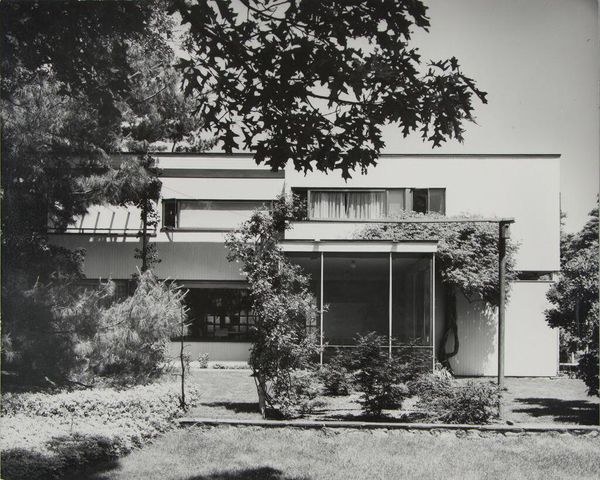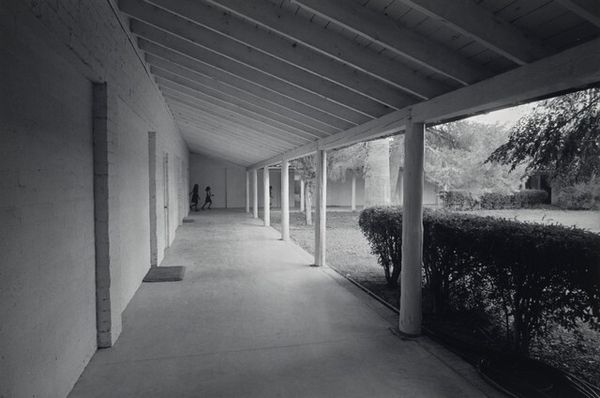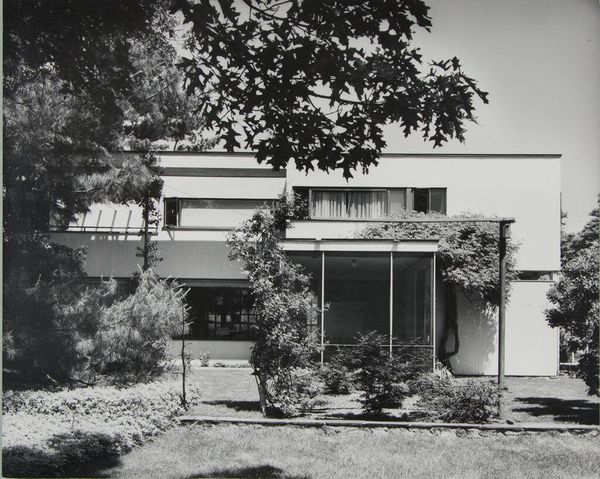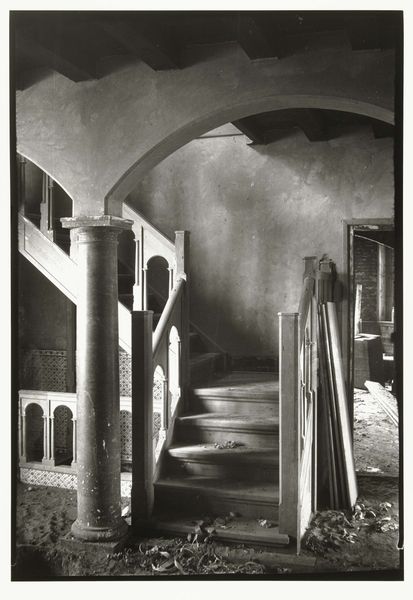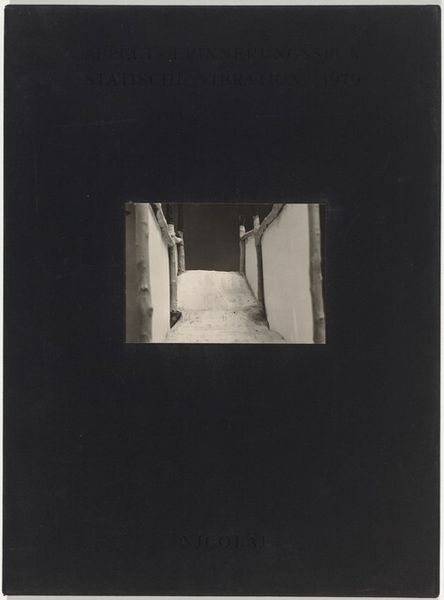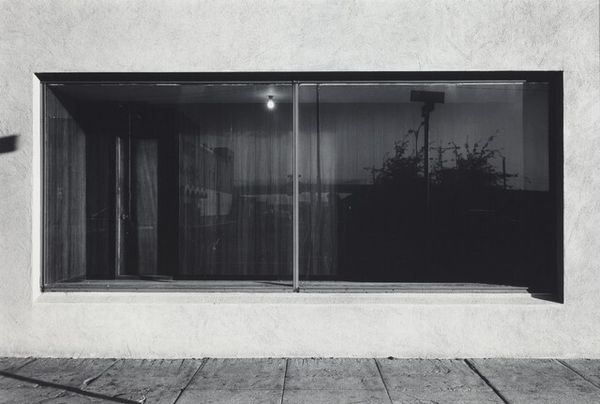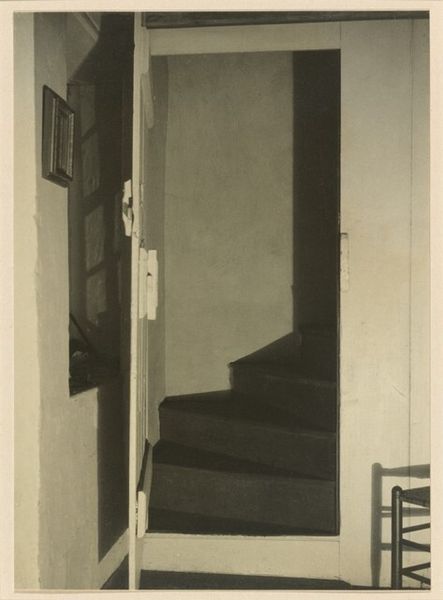
Copyright: CC0 1.0
Editor: So, this is Paul Davis's photograph of the Gropius Residence in Lincoln, Massachusetts, taken in 1938. It's so stark. What do you see in how this photograph documents the house? Curator: It's a powerful image, isn't it? The deliberate use of artificial light transforms a private home into a public statement. Consider the historical context: Gropius, fleeing Nazi Germany, builds this beacon of modernism in America. The photograph then becomes less about a home and more about an architectural manifesto, presented for observation and judgment. Editor: That's fascinating! I hadn't thought of the political implications of spotlighting a private residence like that. Curator: Exactly. Davis's photograph isn't merely documenting architecture. It's participating in the cultural dialogue, asking viewers to consider the role of design and the promise of a new era, even a new ideology, through the lens of this house. What do you make of that now? Editor: I see it as a constructed image, less about the house as a place to live, and more about its role in a much larger cultural conversation. Thanks! Curator: Indeed, and photography itself becomes a key player in shaping that conversation. Food for thought.
Comments
No comments
Be the first to comment and join the conversation on the ultimate creative platform.
